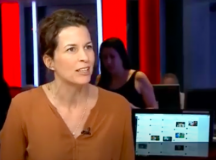Amos Yadlin discusses the recent asymmetric conflict between Israel and Hamas, providing five insights about the operation and six recommendations for future Israeli policies vis-à-vis the Palestinians. These include promoting conditions for a renewed political process with the Palestinian Authority, positively seeking the collapse of Hamas, and advancing the demilitarisation of the Gaza Strip.
After 11 days of fighting another asymmetric confrontation between Israel and Hamas ended with a ceasefire, but without any agreement on the ceasefire parameters or a long-term agreement. In 2014, after Operation Protective Edge, in which Hamas was militarily weakened, I defined the results of the conflict as an ‘asymmetric strategic draw’. Israel severely beat Hamas but did not defeat it. Hamas registered strategic as well as propaganda and psychological achievements.
Following Operation Guardians of the Wall, the asymmetry in the achievements of both sides was even more pronounced – Israel waged an effective, powerful, and shorter military campaign aimed precisely at Hamas’ military wing. However, Hamas waged a multi-dimensional strategic campaign far beyond the military confrontation in Gaza, trying to install itself in a position of political, ideological, and strategic leadership in the Palestinian arena. Hamas even succeeded in undermining the delicate fabric of Jewish-Arab relations in Israel and provoking criticism against Israel for the damage to the civilian population in Gaza.
Below are five main insights about the operation and its results as well as six recommendations for future policies vis-à-vis Hamas.
Insights on the campaign
- Like all operations against Hamas in Gaza, Operation Guardian of the Walls was a ‘deterrent operation’ rather than a ‘decisive operation.’ [i.e. trying to achieve a decisive knockout blow]. Its planners estimated that deterrence would be achieved by severely harming Hamas, with an emphasis on its military capabilities. In addition, it was estimated that the unexpectedly high price that Hamas would pay, would make the organisation ‘think several times before sending rockets to Israel again.’
On the other hand, the Israeli public developed expectations for a decisive victory, Hamas’ collapse and return of Israeli MIAs and civilians. Any deterrent operation carried out without a ground operation, will always risk ‘disappointing’ in the sense that the argument will still be made that ‘they launched rockets until the last minute, we did not kill the leadership and did not return the bodies of the MIA’s…’.
It is important to understand that only an operation aiming for the total collapse of Hamas through a ground offensive, taking over territories from which rockets are launched, and more permissive attack rules, can bring about such decisive achievements. Operation Guardian of the Walls was not designed to lead to the collapse of Hamas. As for restoring deterrence, time will tell how successful Israel has been.
- Israel did not initiate the campaign – it responded to the rocket fire on Jerusalem. In a campaign that it does not initiate, Israel lacks the advantage of surprise, which is essential for achievements in an asymmetrical confrontation with a terrorist organisation. However, the IDF went to war with an orderly military plan, according to excellent operational intelligence and impressive air force capability. Israel severely damaged rocket production capabilities and undermined Hamas’ underground tunnel system. Defensively, Israel foiled all the ‘surprises’ prepared by Hamas military commander Muhammad Deif.
- Two military goals were not fully achieved and require professional and in-depth debriefing: First, Hamas’ political and military leadership was not decapitated – an objective which is important in a war against terror organisation. Second, the operation to destroy the underground infrastructure did not fully exhaust the potential military and psychological achievements it could have. If Israel had severely harmed Hamas’ top tier battalions, the damage done to Hamas would have been more substantial. Had this happened, the deterrence effect and the degradation of Hamas’ capabilities would have been far more significant, and the terrorist to civilian casualty ratio would have been less problematic.
- Diplomatically, Israel was able to explain its position and receive full backing from the United States, which blocked resolutions against Israel in the Security Council. President Biden defended Israel’s right to self-defence, while urging an end the operation. Hostile decisions were also halted in the EU. However, there was a significant collapse of Israel’s position in public opinion and social media, especially among the younger generation and the progressive wing of the Democratic Party in the United States.
- Despite the wider fronts which the conflict expanded into – Jerusalem, the West Bank, and the violence within Israel – the northern front did not erupt. However, Hezbollah allowed Palestinian elements to launch rockets at Israel several times and hold demonstrations and increase friction along the border fence (perhaps even encouraging it). It is important to understand whether, after the operation, Hezbollah’s appetite for military friction with Israel increased, and how the operation affected the IDF’s image as a strong, high-caliber, deterrent force in the Middle East.
Recommendations for future policy
I now advance six recommendations both for a different military strategy as well as broader policy vis-à-vis the Palestinian arena. Israel should return to the active promotion of conditions for a political process with the government in Ramallah; seek to advance the collapse of Hamas, include planning for a ground invasion in any future operation in the Gaza Strip; respond when missiles are fired at Sderot just as it would had those missiles been fired toward Jerusalem; take urgent steps to ensure that the internal arena does not become an active security arena; and advance the demilitarisation of the Strip.
- Reengage the PA
The Israeli government’s policy for the Palestinian arena has rested on six problematic assumptions: First, that it is possible and desirable to push the conflict with the Palestinians off the world and regional agenda. Second, that the conflict can be circumvented by seeking normalisation with the moderate countries of the region. Third, the policy of separation between Hamas and the Palestinian Authority expresses a clear preference for Hamas. Netanyahu’s governments were comfortable reconciling themselves to Hamas’ rule in Gaza, which made it possible to present Palestinian rejectionism and extremism to the world, and to substantiate the argument regarding the lack of a negotiating partner. Fourth, the Netanyahu governments saw Hamas as a governmental address that should be ‘preserved, deterred and weakened,’ but not destroyed, in order to restrain it (and motivate it to restrain others) in Gaza. Fifth, the Israeli government has not had an effective policy in peace time of addressing Hamas’ military buildup in Gaza. Finally, in hindsight, the leading, erroneous assumption was that Hamas was deterred from a broad confrontation with Israel and was primarily interested in rehabilitating the Gaza Strip and in long-term agreement/arrangement.
Looking ahead, Israel must stop the policy of separation that favours Hamas in Gaza over the PA, and return to promoting conditions for a political process with the government in Ramallah. This is a difficult process in which positive outcomes are not guaranteed, but promoting it will bring the initiative back to Israel and strengthen its moral position as a peace-seeking state.
- Not fear the collapse of Hamas
Israel must not fear ‘the collapse of Hamas.’ Hamas is a bitter enemy, combining an extremist ideology with military capabilities built with Iranian money and know-how, which poses a significant threat to Israel and has the potential to become ‘Hezbollah in the south’. Unlike in 2014, ISIS is not at Gaza’s gates, and even if there is a period of anarchy in Gaza, whoever takes over will not have the capabilities to launch barrages on Tel Aviv and Jerusalem; their energy will be diverted to internal struggles. Moreover, the lesson of Hamas’ collapse will become a deterrent to whomever subsequently takes over Gaza.
- Advance planning for a ground operation
A ground military invasion, to one extent or another, must be part of the planning of any future operation in the Gaza Strip. This is a move whose purpose is not a complete Israeli occupation of Gaza, but is a necessary dimension in harming Hamas’ military and political centres of gravity, and in negating its military capabilities.
- Treat Sderot Like Jerusalem
The rules for responding to (minor) rocket fire, and even incendiary balloons in the Israeli communities near the Gaza border, must be powerful and instill deterrence: ‘The Law of Sderot should be the Law of Jerusalem.’ [i.e. how Israel responds when missiles are fired at Sderot should be the same as its response to missiles on Jerusalem]. In Operation Guardian of the Walls, the Israeli home front demonstrated resilience and the IDF demonstrated impressive defensive capabilities. An Israeli position that does not fear another confrontation, (Hamas has exhausted its capabilities to surprise and deter Israel) will allow a better agreement/arrangement that includes the issue of Israeli MIAs and civilians held in Gaza, as well as arrangements that will weaken Hamas rather than strengthening it.
- Ensure the internal arena does not become an active security arena
The Government of Israel, the police and the GSS must ensure that the internal arena does not become an active security arena in general, especially in the event of a conflict with an external enemy. A combined operation is necessary to eradicate armed and organised crime – both nationalist and otherwise. The GSS must be returned to its original missions: fighting terrorism, espionage, and subversion within the State of Israel.
- Demilitarise the strip
Finally, Israel must adhere to its demand for the demilitarisation of Gaza and the prevention of future militarisation. This is a necessary element in any future settlement between us and the Palestinians. Gaza should only be reconstructed in exchange for moves to stop militarisation and even to reverse it.
Concluding thoughts
The defense establishment and the IDF claim Operation Guardian of the Walls was a success. The strategic balance and the question of whether Israel achieved the objectives of its deterrence operation will only become clear in the future (the Egyptians are once again trying to promote longer-term agreements/arrangements but with little chance of success). The extent to which Israel will succeed in blunting and overcoming Hamas’ achievements in East Jerusalem, among Israeli Arabs, and within the West Bank will also become clearer. It is important to carry out a process of debriefing and learning at both the military and political levels, especially studying the disconnect between the military operation and the political level. Traditional wisdom will likely hold true: those who do not ‘rest on their laurels’ after success in the last conflict are more likely to be able to find better – i.e. systemic and strategic – solutions for the next conflict.





































Israel has totally lost the propaganda war in the eyes of the public
– “how dare Israel soldiers kill innocent children !”
– “#FreePalestine” was widely seen, both on TV and social media
In this campaign Iran+Hamas very effectively mobilised public opinion world-wide
– there were 44 “spontaneous” demonstrations around the UK the very next day with 1,000s of flags and banners obviously prepared in advance
This has been ignored for 70+ years by every Israeli government – and has to be addressed.